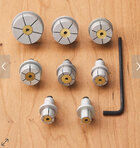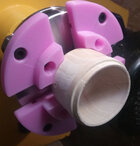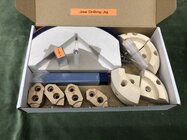Hello everyone, I hope you’re all doing well.
I’m planning to turn some boxes and, as a relatively new woodturner, I’ve made just two small boxes ranging from 3 1/2” to 5”. I often struggle with securely holding the box and lid without damaging them. Now that I have the Beall collet chuck, I’m considering purchasing the Collet IX, which is an expanding collet. My plan is to create a recess in both the bottom of the box and lid to hold them with the Beall Collet IX. However, I haven’t found much information on this technique. If any of you have experience with this method, I would greatly appreciate your insights and advice. As always, I’m very grateful for your guidance.
Thank you in advance!
I’m planning to turn some boxes and, as a relatively new woodturner, I’ve made just two small boxes ranging from 3 1/2” to 5”. I often struggle with securely holding the box and lid without damaging them. Now that I have the Beall collet chuck, I’m considering purchasing the Collet IX, which is an expanding collet. My plan is to create a recess in both the bottom of the box and lid to hold them with the Beall Collet IX. However, I haven’t found much information on this technique. If any of you have experience with this method, I would greatly appreciate your insights and advice. As always, I’m very grateful for your guidance.
Thank you in advance!



